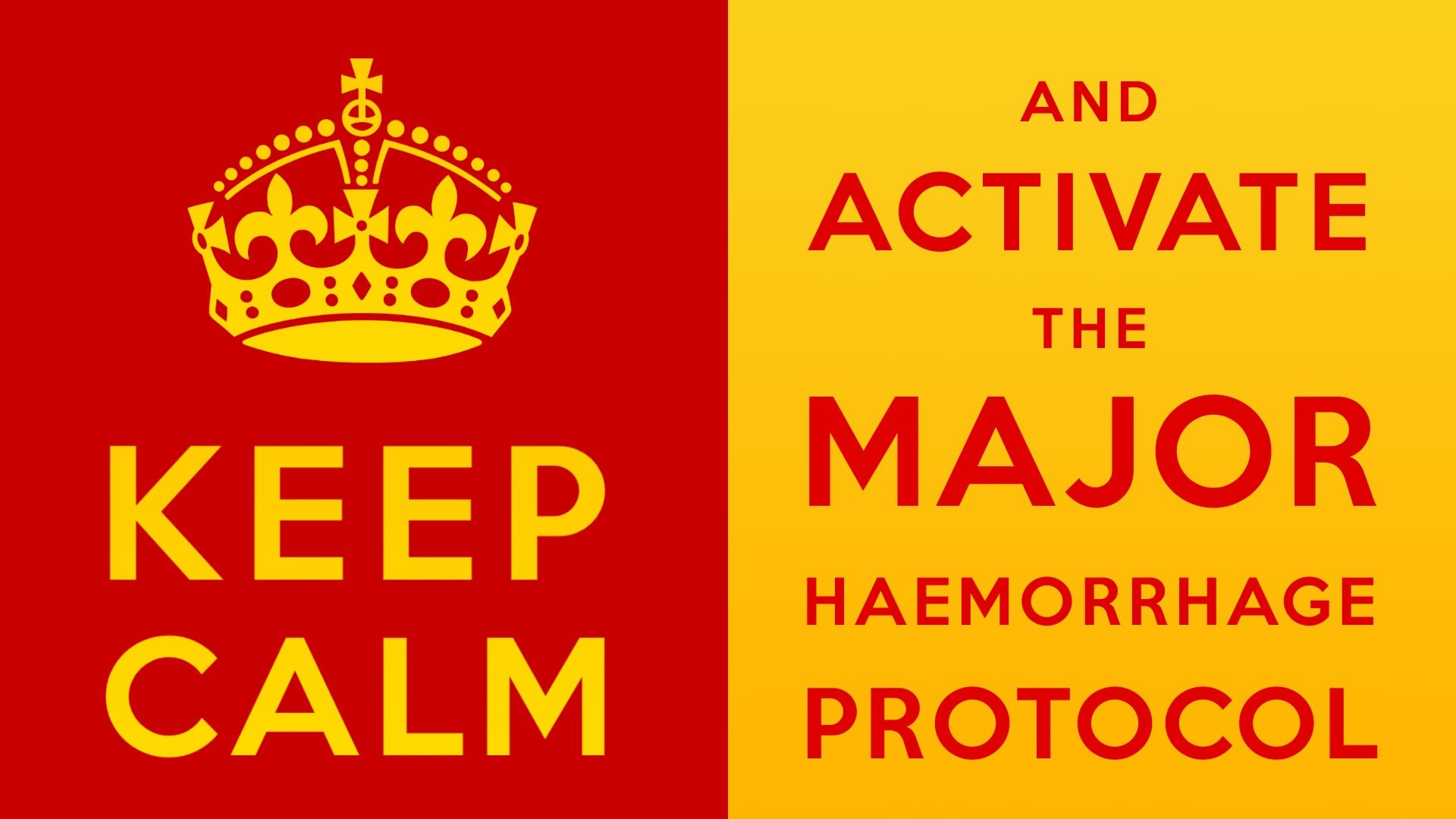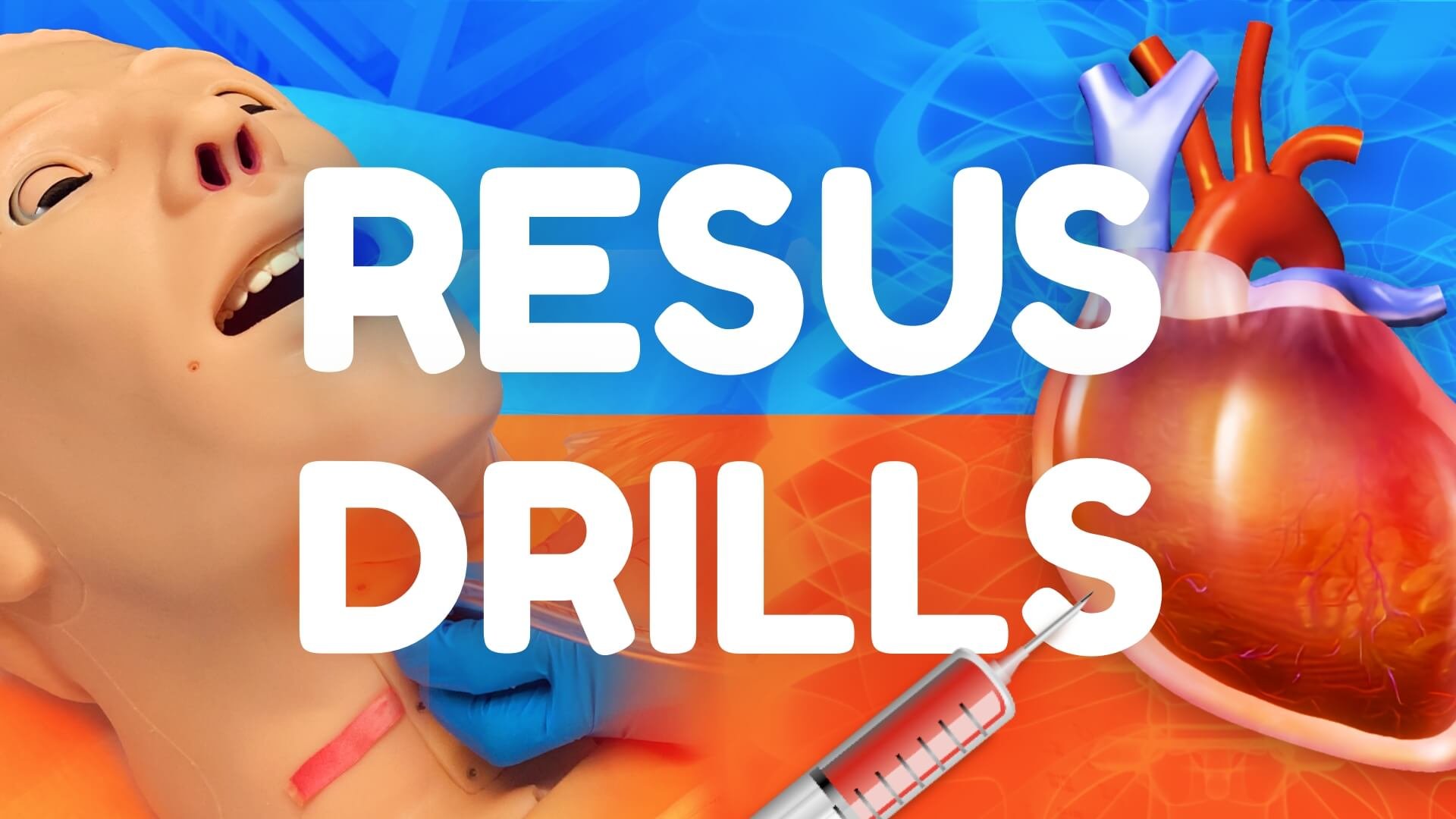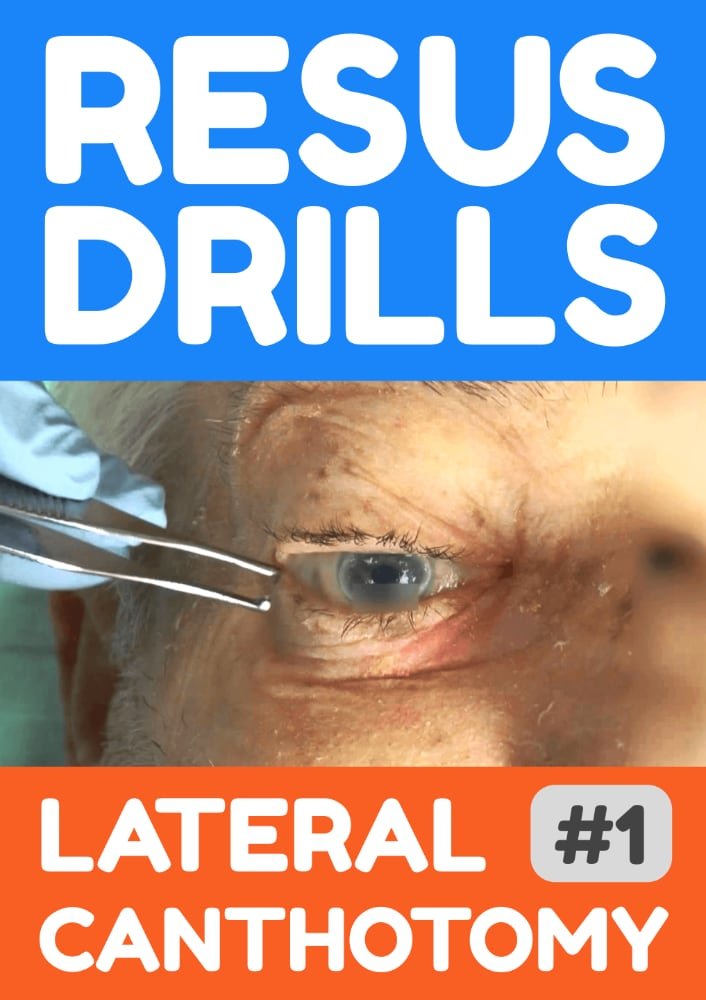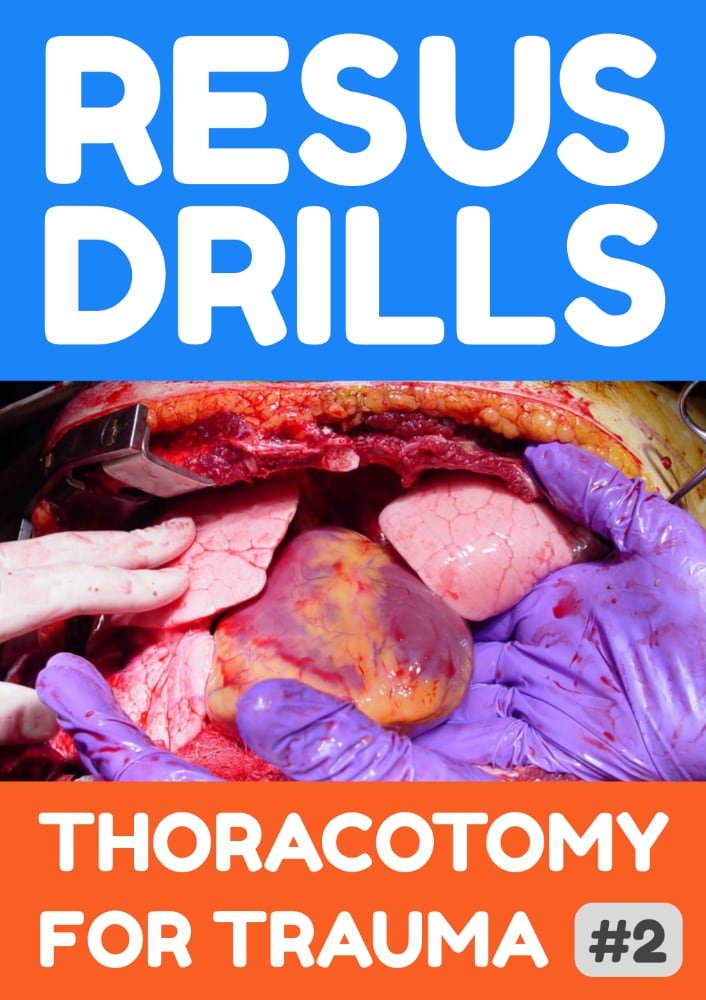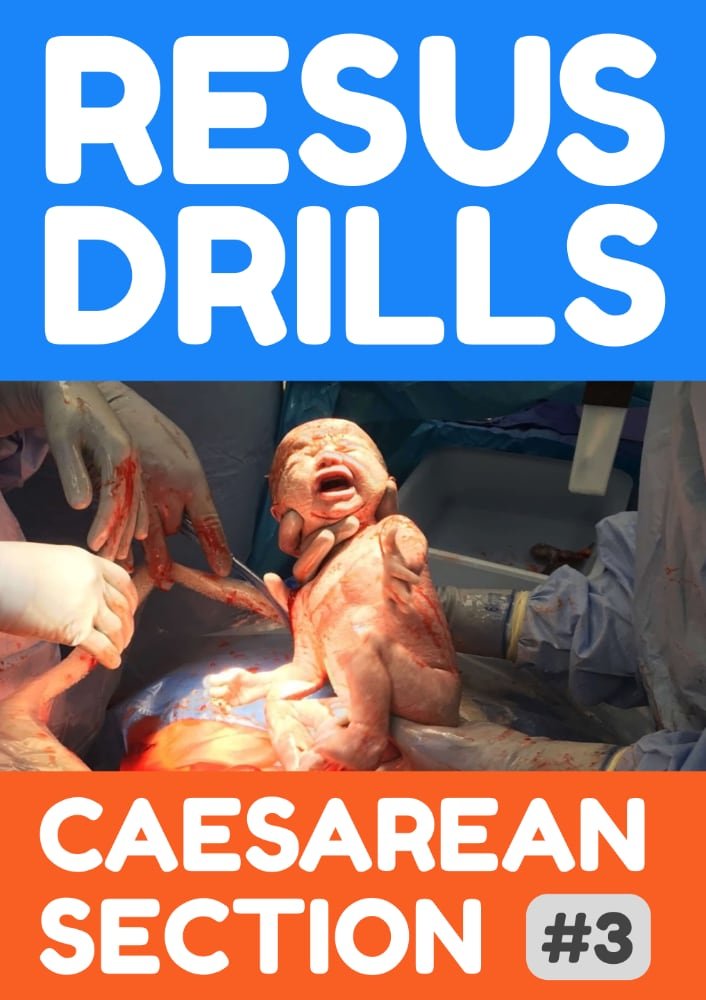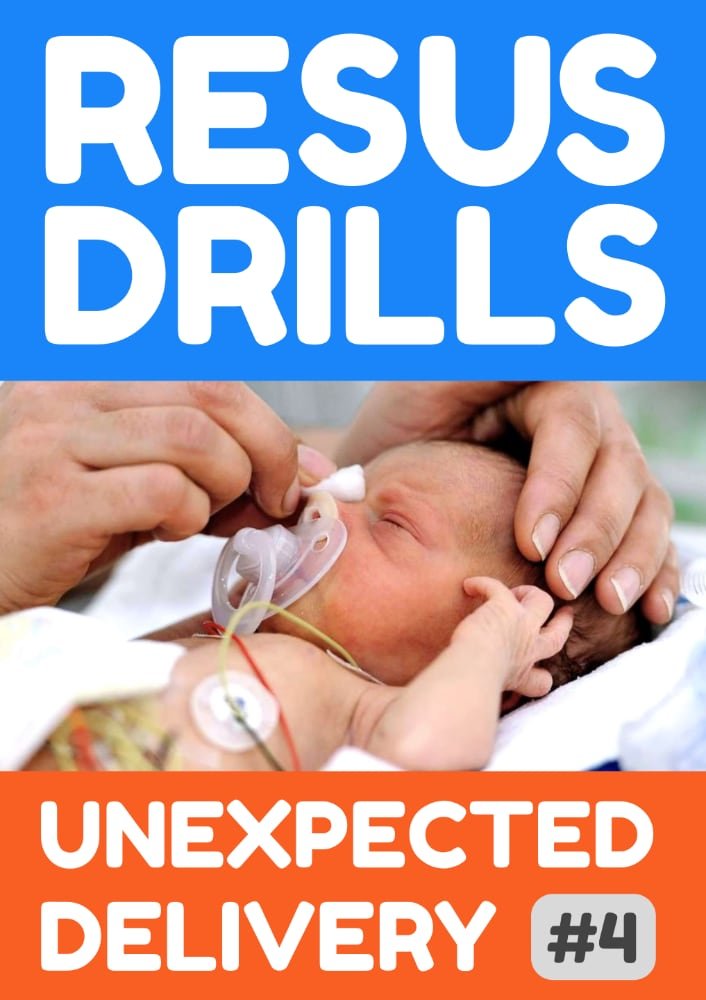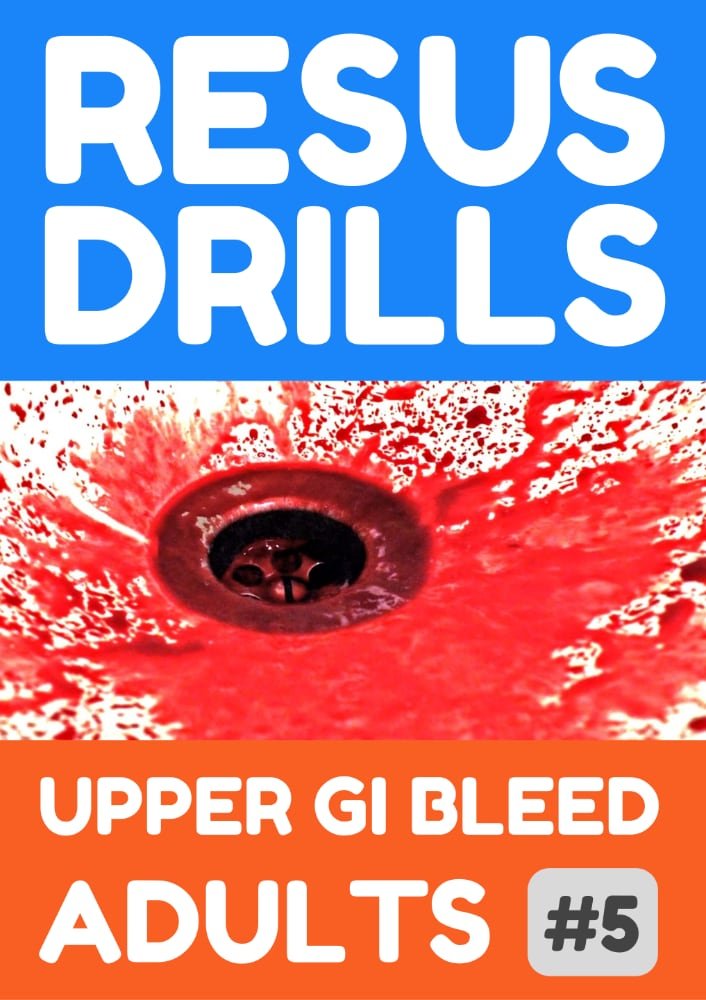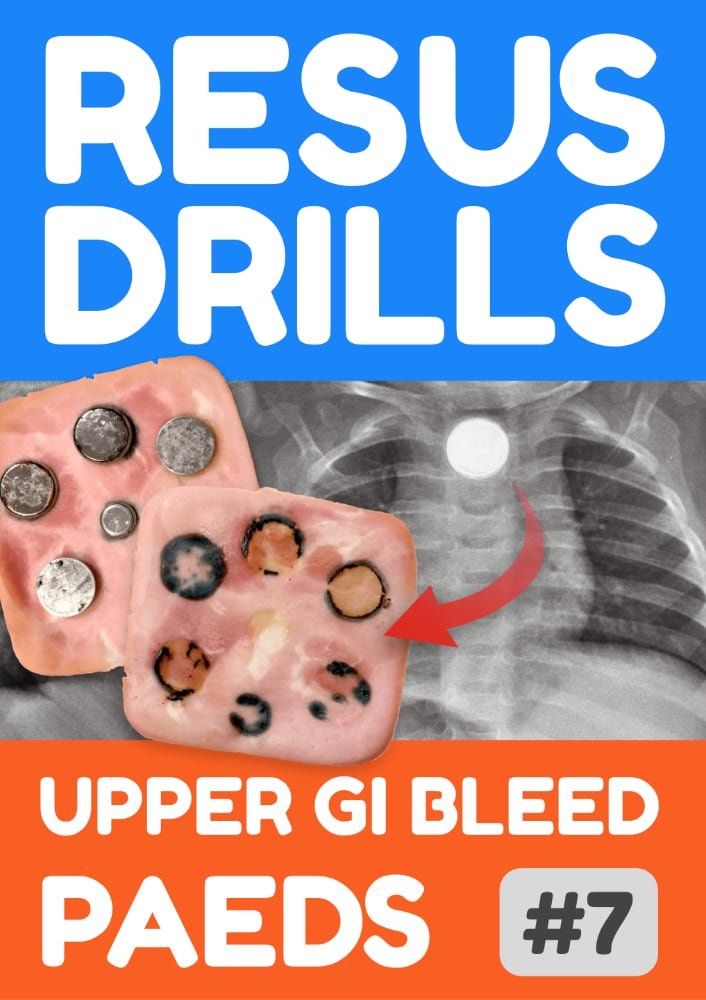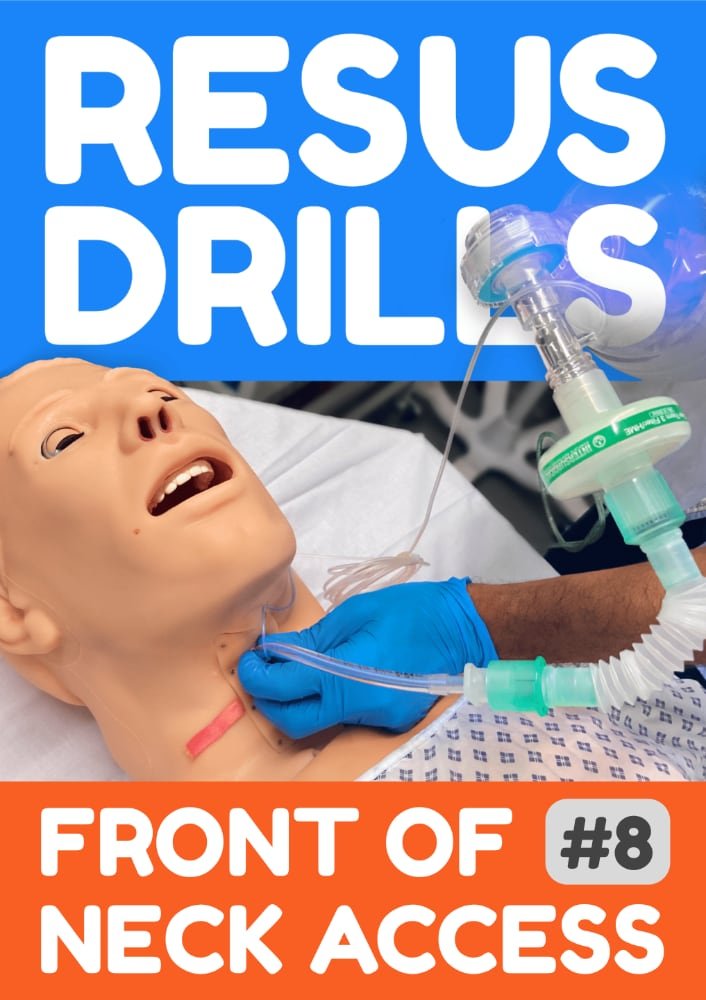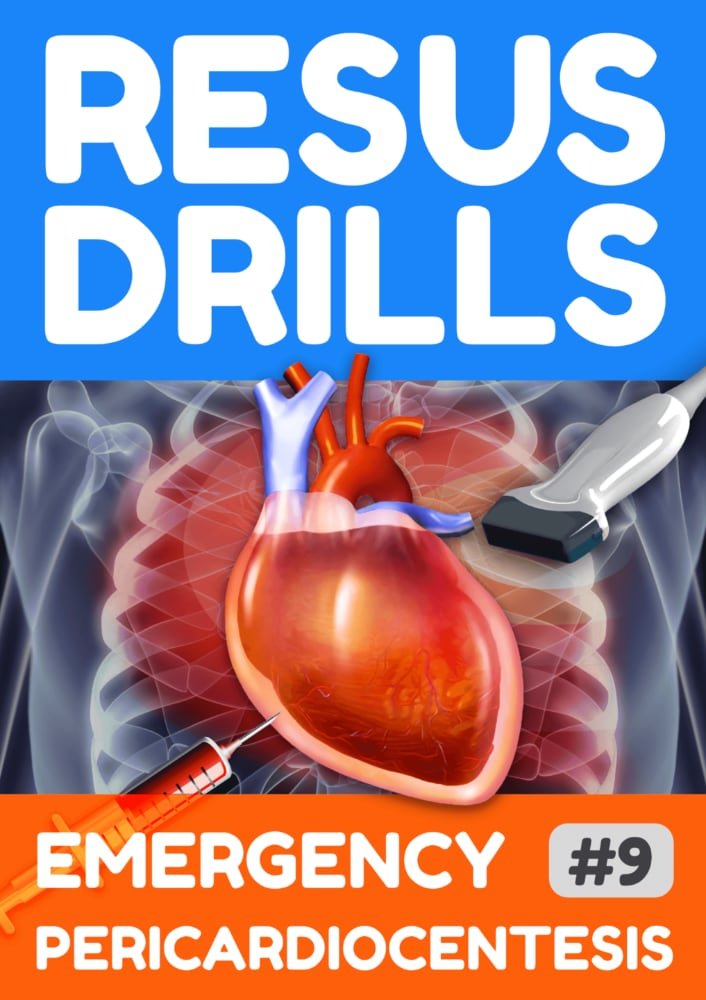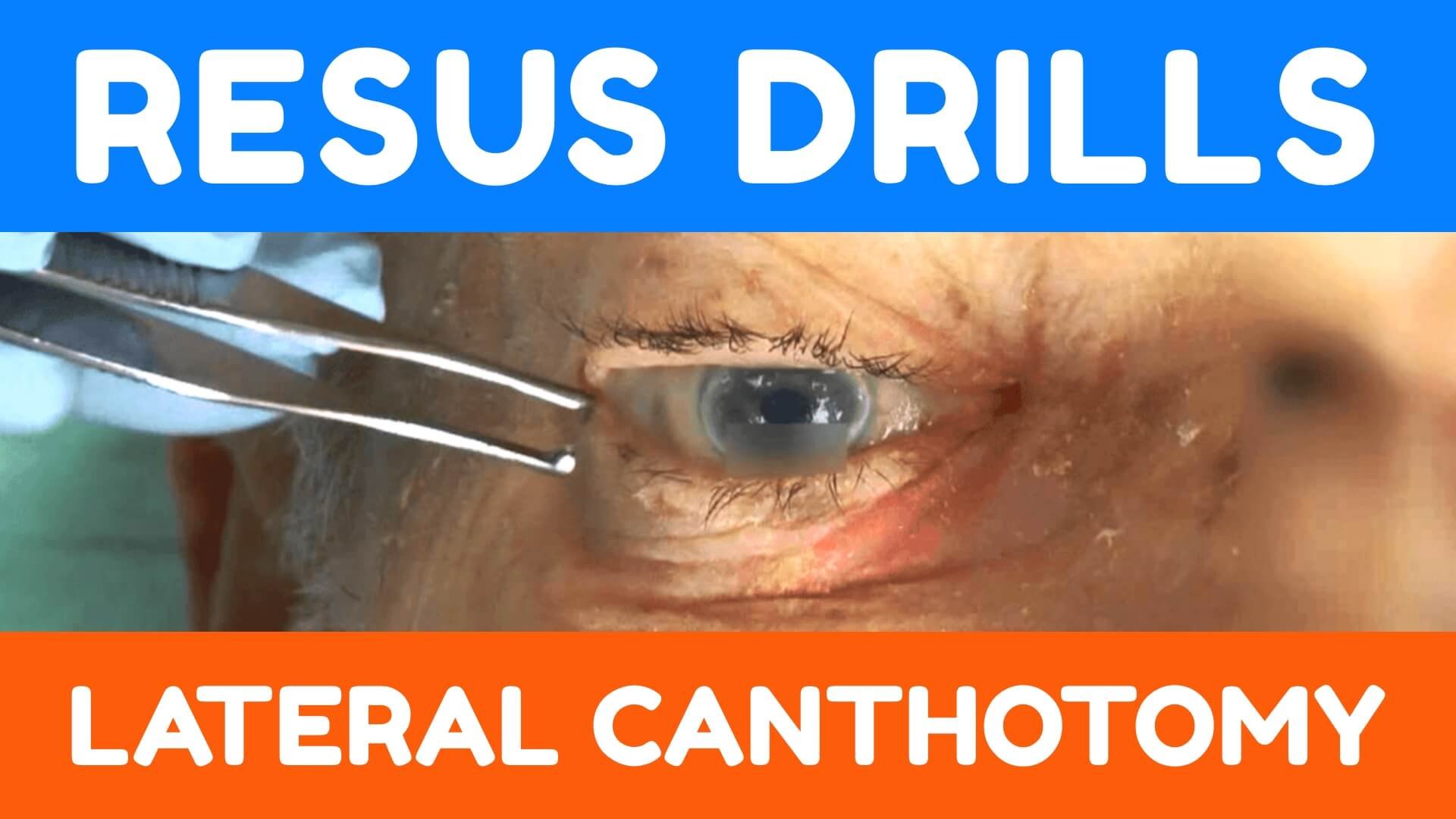Resus Drills (2023)
“Emergency Reflex Action Drills (ERADs) are specifically designed action sequences intended to execute clinical interventions with minimal cognitive load in the setting of marked time pressure. These drills are tailored to respond to particular situations. They are carefully developed with thought, intention, and analysis of the available literature to consider the risks and benefits. In essence, the “thinking” is done in advance, so that during a true emergency the programmed cognitive and action sequence can be applied.” – Emergency Reflex Action Drills: Designing the Human System (Michael Lauria, EMCrit.org)
Back in 2019, Dr Ffion Davies (with support from Dr Carl Leith van Heyningen, Dr Sarah Edwards and Mr Jake Fudge) created six Resus Drills based on this ERADs concept that would-be instructors could download and run in their own ER.
Over the years we have been improving and updating our content, as well as our team. This now includes contributions from Dr Saad Jawaid, Dr Shane Fitzgerald, Dr Eleanor Nicholl, Dr Jalaj Tamber, Ms Ella Knight and Mr Ruvan Amarasinghe (medical students). From our original six drills we have now added three new scenarios and videos to help instructors for a total of 9 Resus Drills!
Principles behind ERADs & Resus Drills
Resus Drills are based on HALO (High Acuity Low Occurrence) events
ERADs are not the same as typical simulations. They are not about learning core medical facts or how to do the practical skills.
These drills are mainly for developing team leadership, teamwork and speed. No-one is being assessed.
Feedback should be focussed on non-technical skills
Pretend the drill is real to make sure when you experience the situation in real life – you are prepared. Practice makes perfect!
Each drill booklet contains information for use after a session: decision algorithms, technical guides for practical skills, and links to additional resources and references.
How do Resus Drills work?
A designated instructor will choose a drill and observe teamwork, communication, and efficiency of the group…
Each drill booklet contains:
Introduction to Resus Drills
List of equipment needed
Script for the scenario (this may include imaging or blood results)
“Red call” sheet (if an ambulance pre-alert is part of the scenario)
Steps outlining the technique
Decision algorithm
Debrief and feedback questions
Additional learning resources for those that want to follow-up on their learning
Drills can be practised in any Resus/ER bay, informally and opportunistically.
The duration of each drill is 15 minutes and is split into three brief sections:
5 minutes for the first run of the scenario
5 minutes of feedback and reflection
5 minutes repeating the same scenario using what was learnt during feedback and reflection
If there is more time available than 20 minutes, the last few minutes can be spent learning about practical procedures and how to operate equipment.
What drills are available?
As we release each drill over the coming weeks, you will be able to view them by clicking the on the covers below…
Every drill will be featured on our website with a link to download a printable PDF booklet, along with an option to customise each to suit your own hospital guidelines and policies (a Google account is required for this step).
Take-home messages after each drill
“Reflect on the drill whilst it is fresh in your mind. Mental run-through later today / next week / in a month – set a reminder!”
Use the Additional Resources from the booklet to learn more about the practical skills required. If you are unsure about any equipment, find someone in the next few days to help go over it again.
Always take opportunities to have another practice run of the same drill.
Many thanks to MAGPAS Air Ambulance for use of their Procedural Aide Memoires (PAMs) to help illustrate many of these procedures.
This work (like all our content) is licensed under a Creative Commons Attribution-NonCommercial-ShareAlike 4.0 International License. 
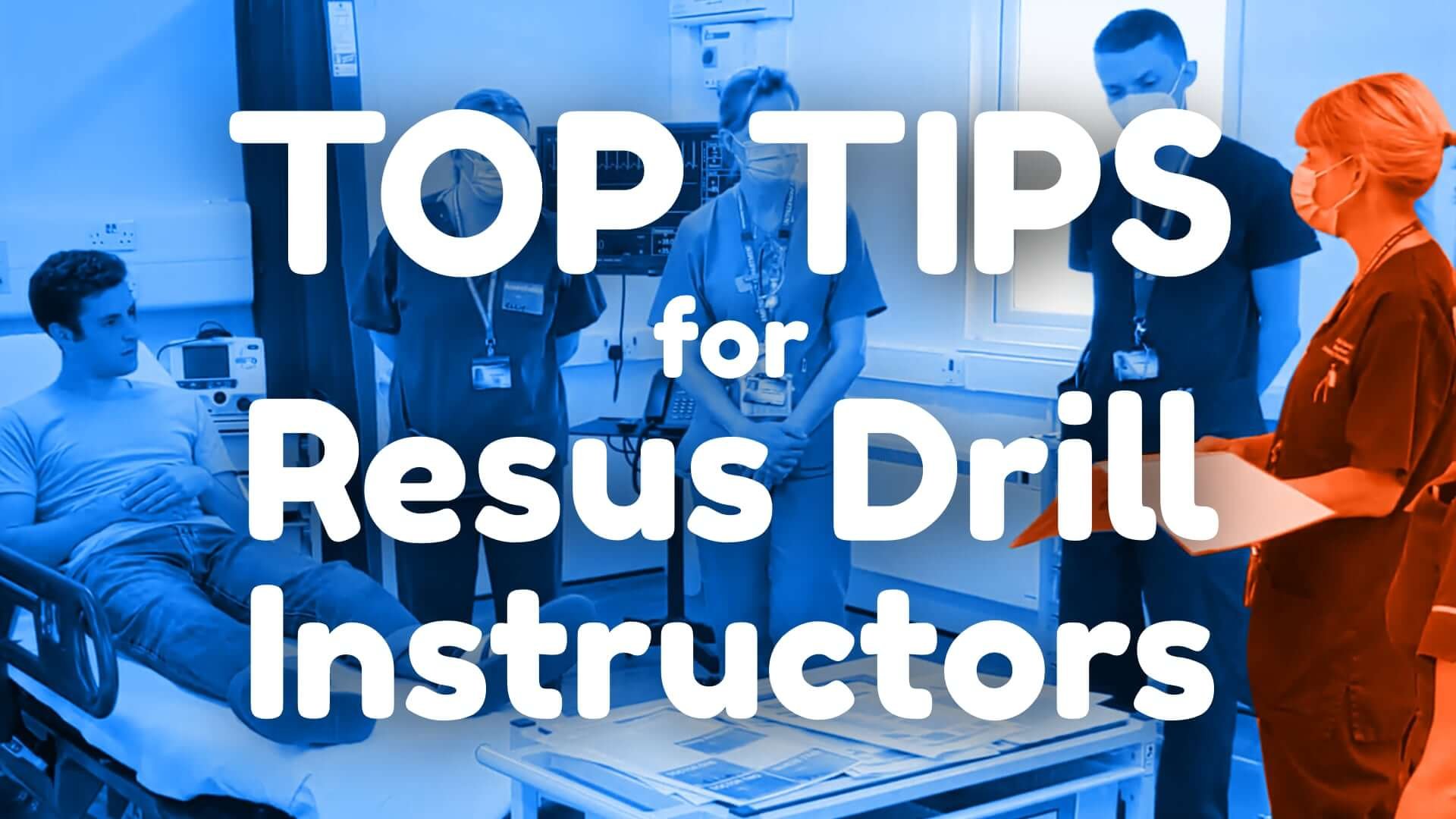
Top Tips for Resus Drill Instructors
